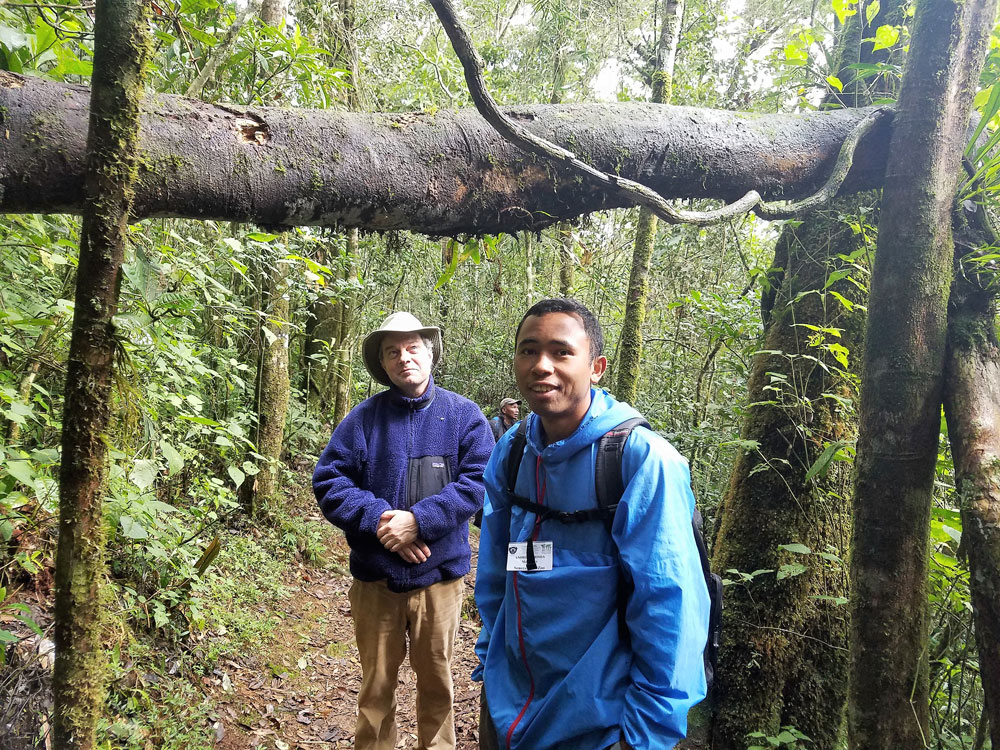Zoo Society Executive Director Pamela Reed Sanchez will be updating this travel log as One Cubic Foot Madagascar continues.Part Three: Meet Mahandry
This is Andrianarisoa Mahandry Hugues (we call him Ma-han’-dray).
Mahandry is a master’s student at University in Antananarivo, studying animal biology. His career goal is to be director of one of Madagascar’s National Parks. He is Malagasy (the word for someone who is native to Madagascar), and speaks fluent French and Malagasy, which of course no one on the team speaks.
One of the requirements for foreigners when conducting research in Madagascar is to have a Malagasy student participate in the project. One can’t get permission for research permits without agreeing to pay a stipend and the costs of the student’s participation. We are also required to pay the fees of the student’s research advisor, whom we will likely never meet.
Mahandry didn’t quite know what to think of the One Cubic Foot team, nor of the One Cubic Foot process, though he told me within minutes of meeting that he wanted to use One Cubic Foot for his master’s thesis.
I made some assumptions about Mahandry when we met, since I knew he was living in the capital city, going to university for a master’s degree. I assumed he was from one of Madagascar’s few “wealthy” families.
As it turns out, Mahandry is from Kiranomena, a town and commune of 24,000 people, though quite spread out. He is the fifth of six children, and his parents are both teachers (though only his father is formally educated). I asked him whether many of his peers had gone to college, and he counted ten. One sister did go to college, but the rest “got married.” 95% of the population of the commune are farmers, and the most important crop by far is rice. At 25 years old, it is unusual for someone to be studying rather than raising a family and working a farm.
Mahandry grew up loving nature and spending us much time outside as he could. He shared with us the ambivalence villagers feel about the creation of the national park system (which is not dissimilar to the feelings of ranchers and farmers in the United States). Fortunately, the Malagasy government has recognized that the creation of the national parks serves two important purposes: the protection of the species endemic to Madagascar and the growth of the tourism industry. In fact, Ranomafana National Park has 30,000 visitors per year, which may not sound significant until you realize it is a ten hour drive over winding, bumpy, mountainous roads from the nearest airport.
Mahandry has been a gift to our team, not only as a rudimentary translator, but for the opportunity learn about this culture firsthand. It has also been validating to see his eyes light up as he understands what this One Cubic Foot project can do, and how he can use it for his master’s thesis and beyond. He is actively out looking for the spot for the cube with us and has jumped in to learn how to take samples for DNA barcoding.
Last night, over a game of Liars Dice and perhaps some local brew, we asked Mahandry if this experience was what he expected. He laughed shyly, shook his head, and said “No. You guys are cool.” Sometimes his English is perfect.








